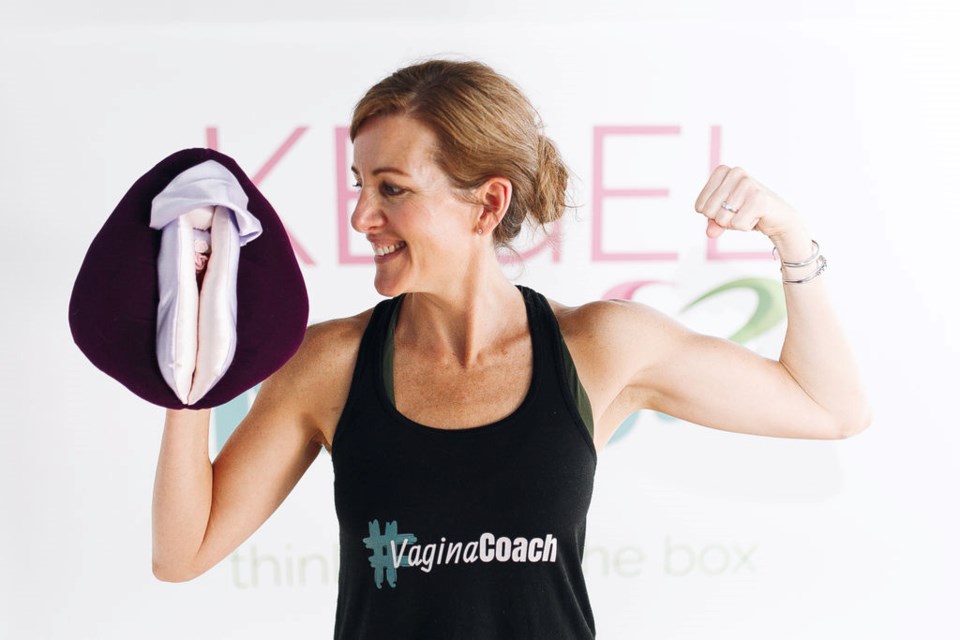She wants women to know that "pads are not something they need to accept as their destiny." No matter what impression feminine hygiene product advertisements might be trying to give.
She says close to 40 per cent of women have reported incontinence—stress incontinence, frequency and urge incontinence—which can cause them to avoid movement and exercise, abstain from sex, and even decline social invitations when in fact this is not something they should have to accept or live with."It's very treatable," she emphasizes. And ahead of World Continence Week, a health campaign from June 21st to 27th led by the World Federation For Incontinence and Pelvic Problems (WFIPP), she is hosting a Kegels and cocktails event to engage and educate women about their pelvic floor health.The event is part of an ongoing series that Vopni has been putting on since the early 2000s to introduce women to industry professionals in a fun setting that people would actually want to attend, she says. The event feature doctors, naturopaths, physiotherapists and other public health professionals as speakers on topics like vaginal dryness, urinary incontinence, prolapse, and preventive or restorative treatments.
The upcoming event on June 22nd in Vancouver will feature Dr. Lori Brotto speaking about sex, libido and the pleasure gap and physiotherapist Trish Gipson along with Vopni covering different facets of pelvic health such as hysterectomies and pelvic surgeries.
"My main mission really is to help women prevent pelvic floor dysfunction and also help people who have existing pelvic floor challenges, be able to overcome them and get back to living their life fully without bother and embarrassment and shame," says Vopni.
She explains that the pelvic floor is a group of muscles and like any other muscles in our body, they benefit from movement that focuses on strength and endurance and flexibility. But when there's an imbalance in muscle function, that can contribute to pain or bodily dysfunction.
"The practice that I do is, I use common exercises that people would have seen but I coordinate them with pelvic floor activation to train the pelvic floor dynamically," says Vopni. "I also do a specific exercise technique called the hypopressive method that trains the involuntary aspect of the deep core."A Kegel is a form of pelvic floor exercise or activation but it's not the only type of pelvic exercise. Vopni says, "a Kegel is a voluntary activation and relaxation of the pelvic floor. So I teach them how to do Kegel and then how to bring it into other whole body movement that then trains the pelvic floor dynamically."One such movement she calls the core breath where an inhalation causes the pelvic floor to lengthen and relax, and the exhale causes the pelvic floor, to contract and lift.
Vopni asks her clients to imagine a jellyfish, on the in-breath the jellyfish is softly floating in the water and on the out-breath the jellyfish contracts and lifts up towards the surface of the ocean. She finds that many people think of Kegels and pelvic exercises as just a squeeze so when people can visualize something within their body and coordinate the actions with their breath it helps improve the outcome. She also suggests imagining picking up a blueberry with your vagina and anus.There are many lower-body ailments that pelvic exercise and physiotherapy can treat but many women are misinformed or shamed into silence by societal pressure which prevents them from coming forward and being diagnosed or receiving treatment. It's not a cure, although some women can see improvement in a few weeks or months but Vopni says, like brushing your teeth, pelvic exercise should be a part of our everyday lives.


